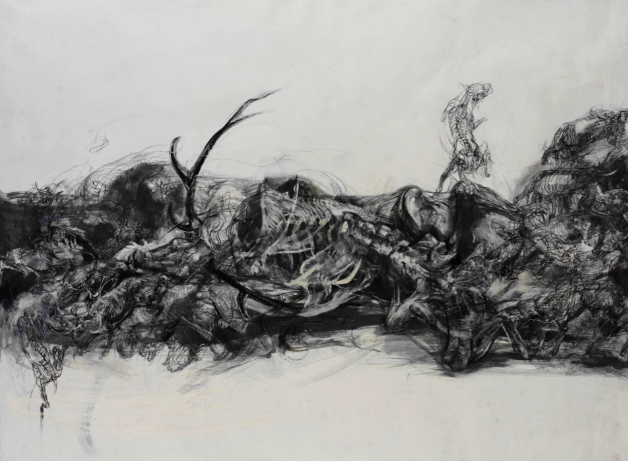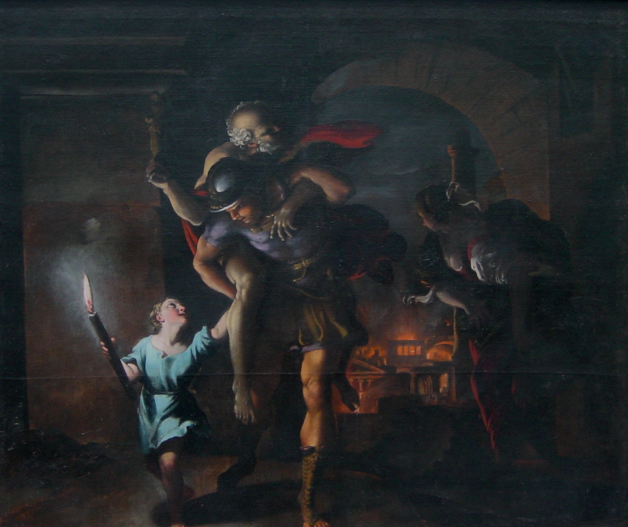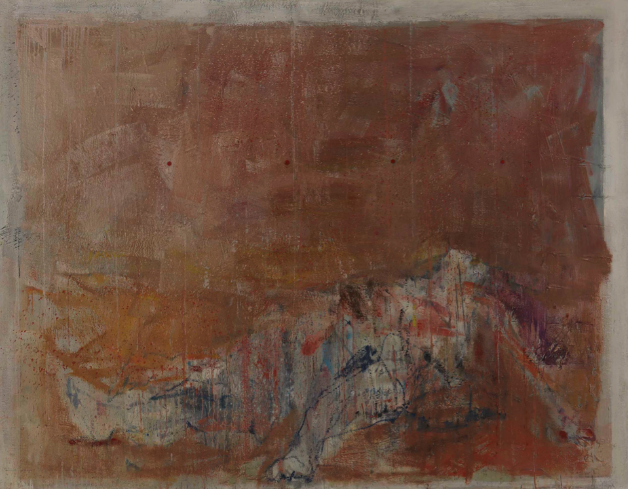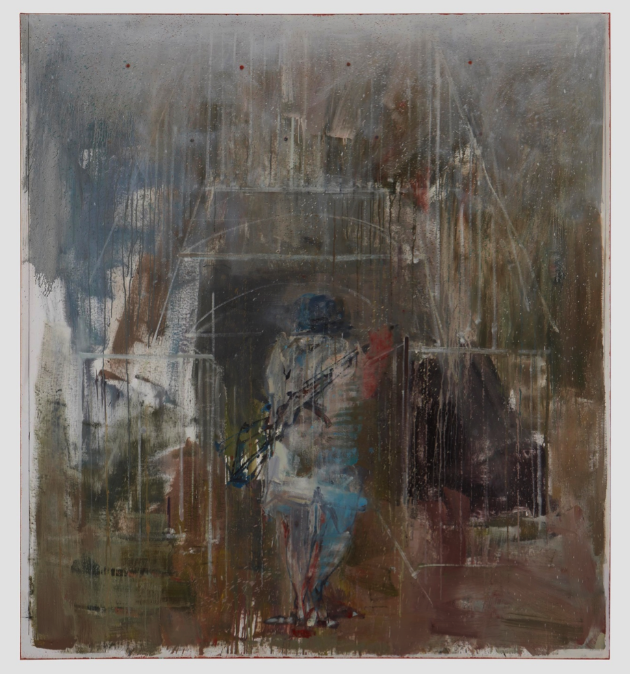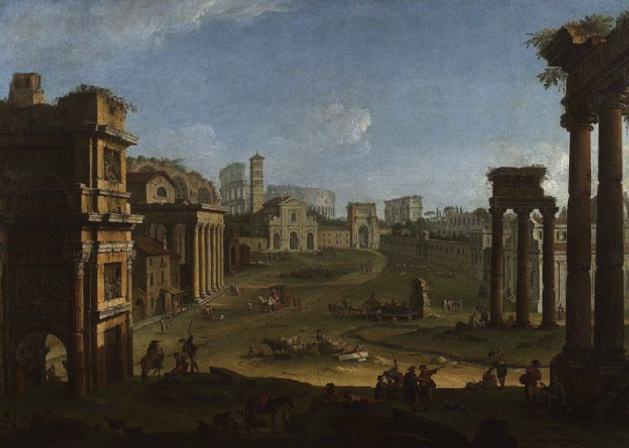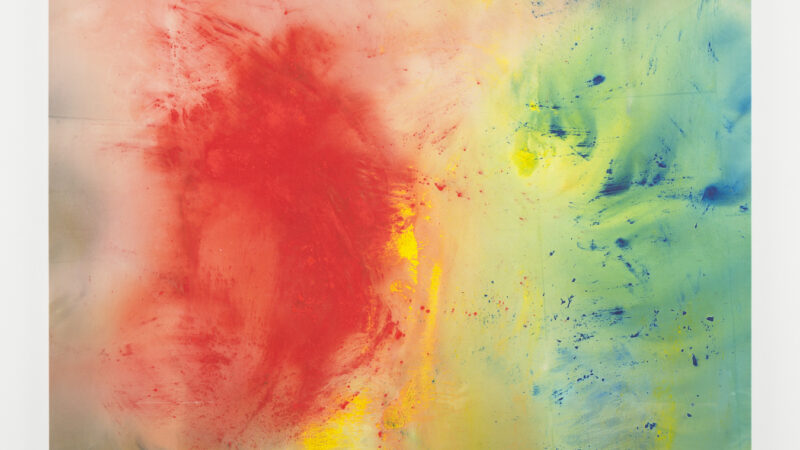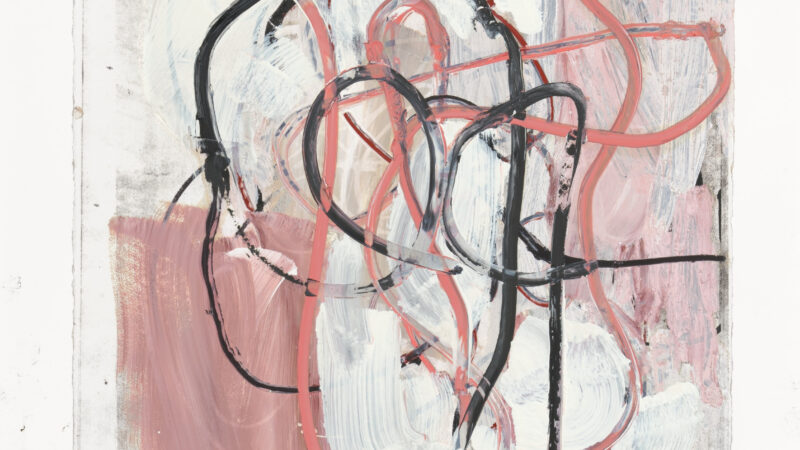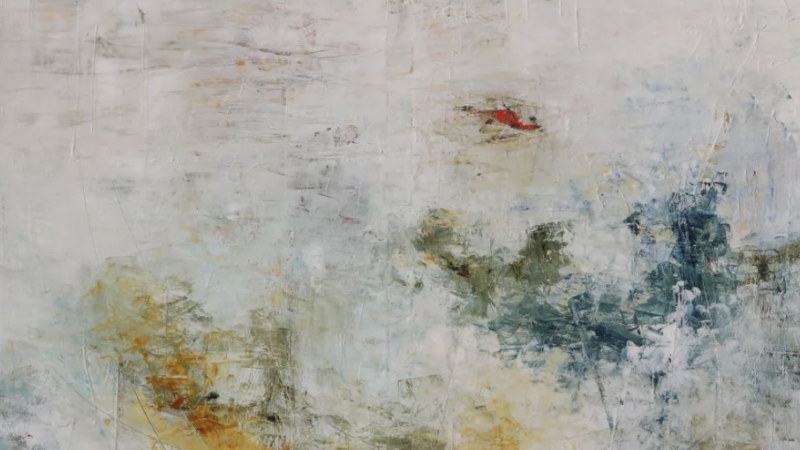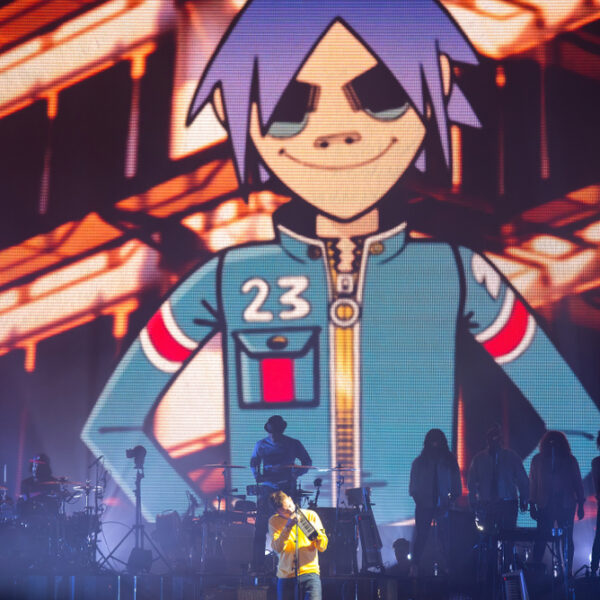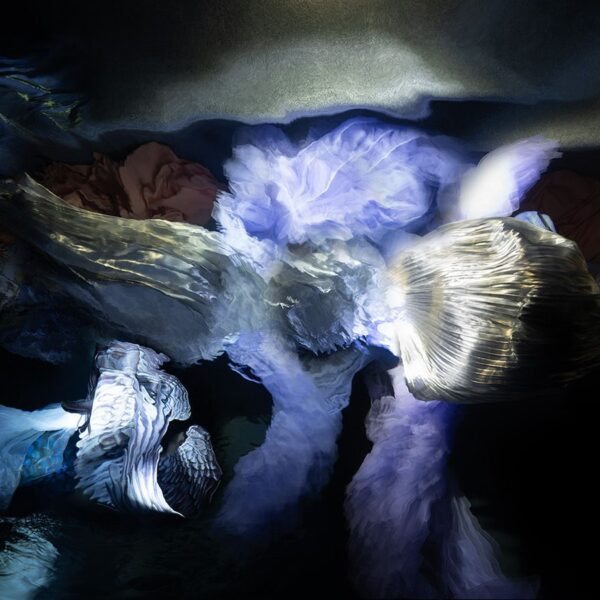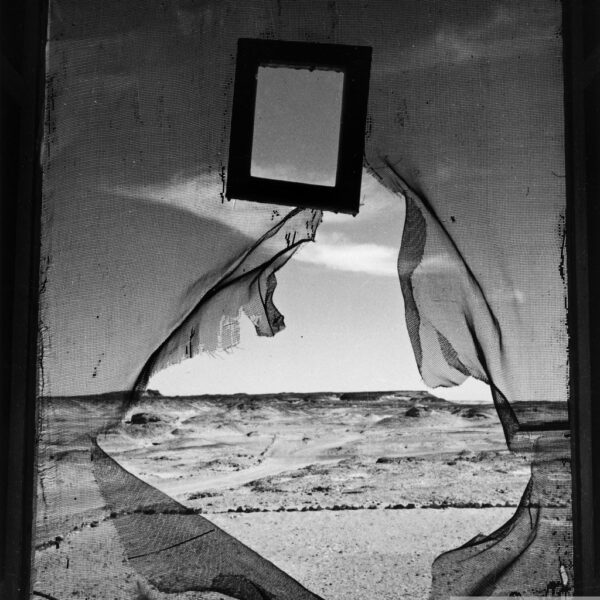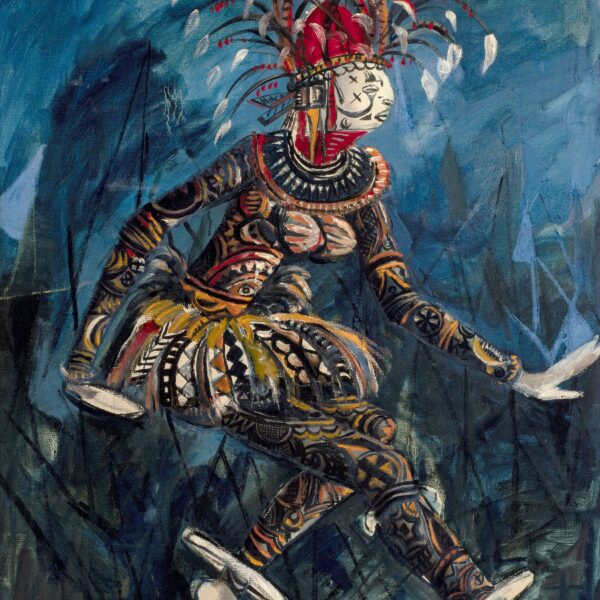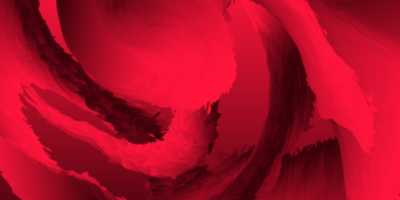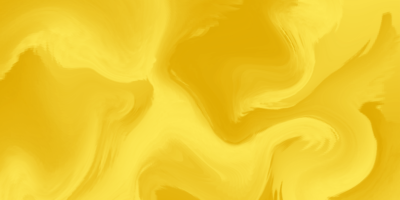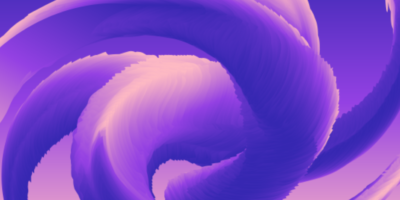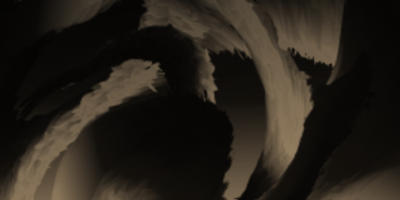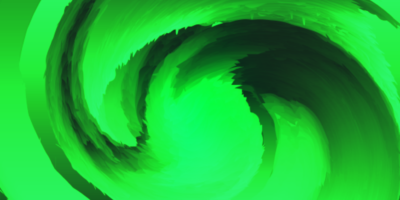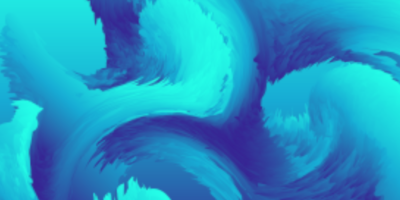The birth of cinema…and beyond
The intensifying dynamism between painting and film has been gradual but inevitable.
Traditional oil paintings evoke movement through stillness, dimension within a single plane, and multiple scenes within the frame. Consequently, viewers were encouraged to create their own ‘film’ – long before the medium itself existed. Once it did, however, film continued to express the same moral concepts that inspired traditional paintings, whilst presenting us with a direct experience of language, voice, and facial expression. Film began to occupy a similar position where paintings once stood. And just like a painter’s brush, a director’s camera presents us with a view that is absolute and specific. When it moves, we move – we see what we should see when we should see it, and the meaning comes as an afterthought, a consequence (or not, depending on the success of the film). Although this appears restrictive, artists who work with all mediums can only show us what they see; it is always up to us to develop our own scenes out of the static, our own perspective through a camera, guided by their suggestions but not necessarily dictated by them.
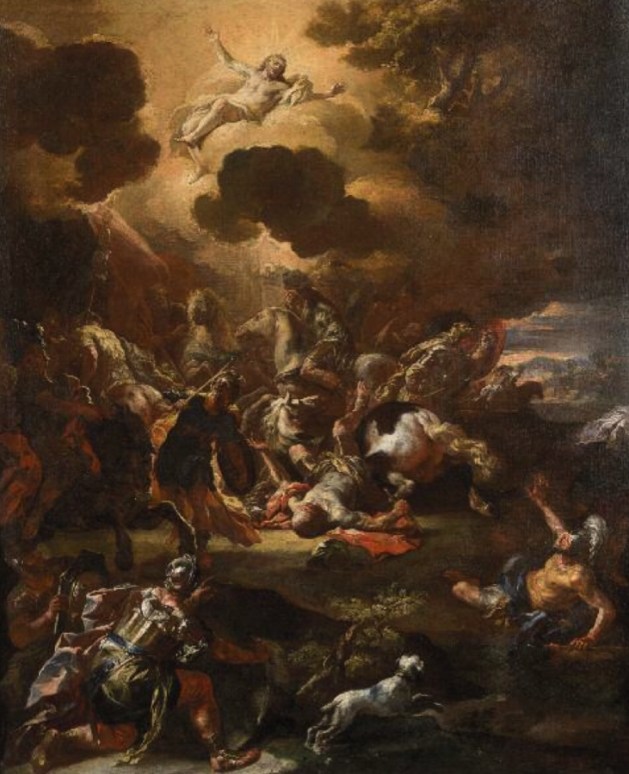
Francesco Solimena, ‘Conversion of St Paul’
Rosenfeld Porcini’s latest exhibition, aptly titled “The Birth of Cinema…and beyond”, encourages you to do just this. Exhibiting both contemporary and classical paintings alongside video art, viewers are led through a surprising number of parallels between the two mediums, actively exploring both the artist’s and their own approach to visual narratives. By being inspired to uncover some startling and unexpected links between each work, viewers become as integral a part of the exhibition as the pieces themselves.
Lanfranco Quadio’s ‘The Death of Actaeon’ (2013, above) depicts the ancient myth of Actaeon who, having seen Diana bathing on Mount Cithaeron, was transformed by her into a deer only to be pursued and killed by hunting dogs. The tale of the hunter turned hunted is pictured by Quadio with an alarming aggression of brush and pencil strokes, Actaeon’s transformed carcass shredded almost beyond recognition. The chaotic lines not only create a highly expressionistic sense of destruction, but also an image as violent as the scene it interprets. The image, stretched across the middle of the canvas, synthesises the successive moments of the mythological scene – antlers jut out amongst pieces of deer and human body parts whilst a dog flees the scene. By freezing and revealing several moments simultaneously, Quadio’s work reflects cinematic movement.
Directly opposite hangs Giovanni Lanfranco’s (1582-1647) ‘Aeneas Fleeing with his Family from the Burning City of Troy’ (above), a classical oil-on-canvas that conveys the artist’s vision of a Trojan hero. At the forefront of the painting, a child guides the family with a candle as Troy burns in the ominous distance. The dark background folds into the red flames destroying the city, offset by the symbolically hopeful white light that guides Troy and his family. Like Quadio, Lanfranco’s painting reveals multiple narratives within a single painting – destruction and creation, death and life.
Nearby, Ubaldo Gandolfi’s (1728-81) ‘Hercules and the Hydra’ (above) explores classical mythology. As legend goes, after the goddess Hera drove Hercules to madness causing him to kill his wife and children, Hercules was condemned to serve the king Eurystheus for twelve years. Part of his sentence involved completing twelve labours so difficult they seemed impossible, one of which was to kill the Hydra, a sea serpent with nine heads that would rise out of the swamps and terrorize the countryside of Lerna. The fluidity and movement of the line-work in Gandolfi’s piece mirrors the fluidity of the Hydra’s swamps and of course, of film, centuries before it’s invention.
Cesare Lucchini’s ‘Those Who Remain – The Fall’ (2013, below) exposes the death of an unidentifiable human figure. Streams of colour, perhaps symbolic of one’s mind and senses, hurl between agitated outlines of limbs. Expelled of their consciousness, they are driven from the body with dynamic aggression. Set against a landscape of muted, hollow tones, a parallel is drawn between a once significant existence and the void of a body without life.
Another of Lucchini’s works, ‘The Child Soldier’ (below) confronts current concerns as the title suggests. In this piece, white clouds are shot through with flourishes of red, blue, brown and purple that rain down upon the vague figure of the child in a haze of life and death. The rough surface texture, agitated brush strokes and vitality of colour present in all his work suggest the liberation of death and the vigour of life. Amidst ceaseless global unrest, a child becomes a soldier. Surrounded by death, this child must fight against death, perhaps by even claiming the lives of others in order to do so, whilst confronting his own mortality.
These works hang directly opposite several works by the old masters Ferrau Fenzoni, Gregorio de Ferrari, and Dirk Hendricksz. Each of these paintings act as a religious testimony in some way, adopting the traditional subject of homage to the death of Christ. What creates so intense a comparison between these works and those of Lucchini is precisely this difference of the deaths they portray. The classical works that remain poignant since Christ’s death was redemptive and, now, celebrated. Conversely, Lucchini’s works are concerned with the deaths of today – unidentifiable figures illustrate the inevitable end of life acts as a reminder of our finite existence. All these paintings nevertheless radiate a vitality that causes a reaction akin to watching a film.
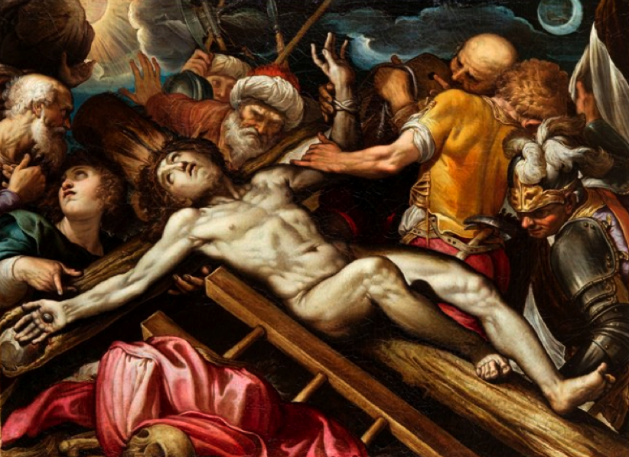
Ferrau Fenzoni, ‘Christ Nailed to the Cross’
Downstairs hang a trio of works by contemporary artists Aida Rubio Gonzalez and Robert Muntean, between which a piece by Johann Heinrich Schönfeld (1609-82) is placed. Not only are these paintings several hundred years apart, but the relationship between them as paintings and in turn their relation to cinema is ambiguous at best. Although GonzÃlez’s ‘Florence’ portrays a very different public scene to SchÃnfeld’s ‘The Rest after the Hunt’, a parallel can be drawn between the sense of animation embodied within both paintings. GonzÃlez’s work subtly unites various eras – a young girl stands centre frame, her gaze direct with the viewer, as a nun cycles past crowds of people and a portrait of a cowboy. The colours vibrantly capture movement around (and in spite of) the motionless. Whilst the figures of SchÃnfeld’s painting are captured in a traditional oil-on-canvas stillness, they are clad in vibrant robes and talking in animated conversation. As clouds disperse in the distance to give way to the sun, SchÃnfeld depicts a lively moment of anticipation and progression.
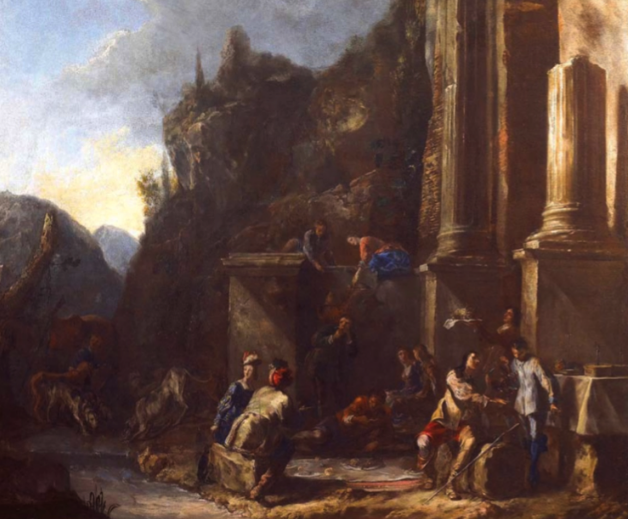
AÃda Rubio GonzÃlez, ‘Florence’
Meanwhile, Muntean’s ‘Your Life Was in My Mouth’ (below) withdraws almost entirely from precise realism, the instinctively applied, vibrant colours simplifying two figures in conversation. The kaleidoscopic perspective mirrors the lens of a film camera, whilst the flat layers of pigment are applied with intense brushstrokes to create an emphatic cinematic scene. Despite the obviously contemporary technique, the painting itself echoes the aesthetic of the classics, encouraging readers to develop their own ideas and dialogue for the two figures.
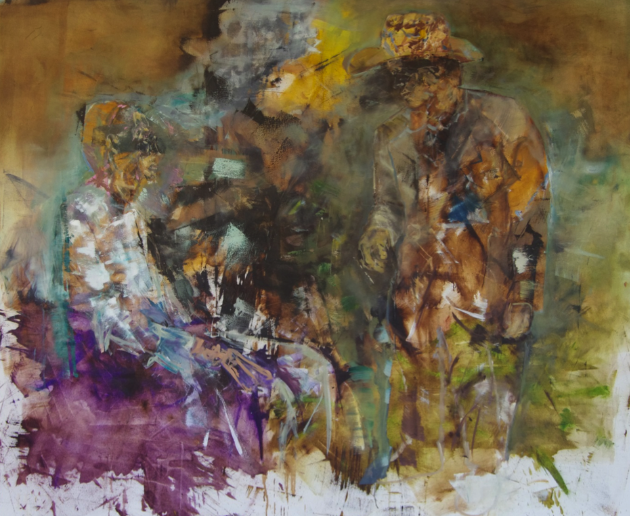
Robert Muntean, ‘Your Life Was in My Mouth’
Completing the exhibition is Fatma Bucak’s film ‘Blessed Are You Who Come’, which is set against the remains of a church on the Turkish-Armenian border. A group of elderly villagers stand haphazardly across the landscape, whilst a woman dressed in black conducts a semi-religious ritual. Colonial, cultural and ceremonious references are made as the eldersnarrate what they see before them, whilst the camera itself does not move throughout. By maintaining a fixed perspective, the film captures multiple moments and ideas within a single frame, which echoes the older paintings seen throughout the exhibition. However, directly opposite this film hangs such a painting – Antonio Joli’s ‘Campo Vaccino’ (below) – which is rich with cinematic fluidity. This becomes the uniting motivation behind the exhibition: how painting reflects a film and a film mirrors a painting.
Throughout this piece I have constructed a narrative from which I believe each work derives. I cannot ever be sure if the narratives I transpose onto works are what the artist intended to convey to viewers, and nor will you necessarily agree with me. But what this exhibition achieves through an extensive array of works is precisely this interaction with viewers. The content of each piece is makes ‘meaning’ visible, enabling viewers to develop a personal understanding with each piece. These paintings are hung to be read beyond what it shows within the frame, but how it shows each scene. The experience becomes more than simply a ‘visual delight’; both the collection and the layout lead viewers to adopt the feeling of walking through a scene in a film, or becoming part of a painting. From painting came film, and contemporary works are influenced by film. It is this cyclical evolvement, where the cinematic is incorporated into the motionless – and vice versa – across several eras that results in this exhibition successfully presenting a confirmation of how the two mediums are now almost inextricably linked.


